|
Continuing the Photo Tour of my Life in
Flight.

 | "Soaring Like An Eagle" takes on a real meaning when flying in a glider.
Actually the aircraft is considered a "glider" when gliding to earth, and
a "sailplane" when soaring on air currents - whether from thermals (hot air
rising), or ridge lift (wind flowing up a mountain), or wave lift (high altitude air
currents - often leading a weather frontal system).
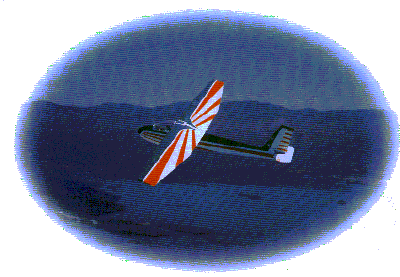
I have thermaled (circular flight as in an invisible whirlwind) with hawks and
eagles, and played with several of them at one time on air currents rising from the desert
floor. When you see birds circling in the middle of a warm day, they are not looking
for food - which they do in the early morning or late evening - but are actually having
fun like we are.
|
 | Of course, to initially get airborne a glider needs the assistance of an aero-tow, or
winch or auto tow, though some now have self- launch capabilities with a small engine and
prop.
 
Here are a few of the different tow planes I have flown.
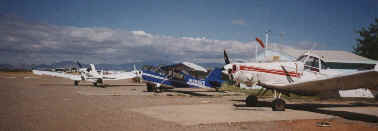
Multi-colored tow
planes add to the fun of watching gliders.
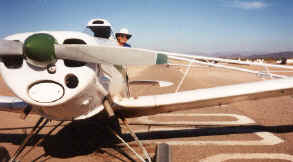 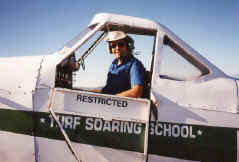
The Pawnee aircraft (some formerly crop dusters) are a favorite tow plane because
of their power to pull itself and one or two gliders at good flying speed to altitude.
Most of my towing and glider flying has been done at Turf Soaring School, Pleasant Valley
Airport, Peoria, AZ.
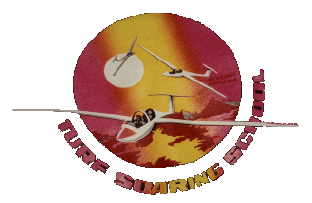
Visit Turf Soaring
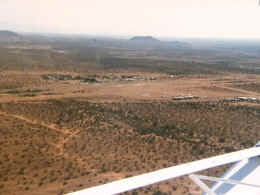 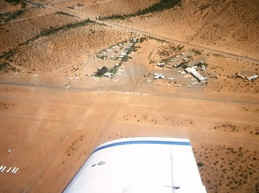
Pleasant Valley Airport has three parallel runways (one paved) and one
perpendicular runway. Controlled by Turf Soaring and its commercial glider
operations, private gliders, aircraft, ultra-lights, and the Civil Air Patrol AZ Glider
Flight 400 also enjoy use of the facilities.
 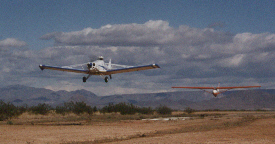
Whether going for a glider flight, or merely watching the fast paced and colorful
flightline operations with departing tows and landing gliders, plus thermaling and
aerobatic gliders in the sky above, many enjoy an exciting day at the airfield.
 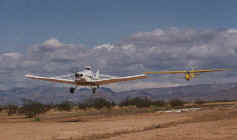
Though tows are usually done to 3000' or 4000' above the ground for commercial
flights, many private and rental flights get off tow around 1000' and soar on thermals
(often going above 8000 to 10000'). Normal commercial flights usually last 20 to 30
minutes, while routine glider club flights may last 4 to 5 hours (remember "no
engine"). During one flight we experienced a climb rate of over 2000
feet/minute. Because a weather front was coming in we decided to land, but found in
trying to descend with our spoilers fully extended and doing slips, stalls, and whatever
we could lose altitude, the best we could do was a "climb" rate of 200
feet/minute. We decided to do an off-field landing several miles south of the
airport and, after sitting out 30 minutes of high winds and dust (where we could not see
from one wing tip to the other), we were retrieved by trailer.
|
 | Glider flying is a real thrill and has many different facets as you will see. It
is also a personal challenge everytime you go up, to see how well you can work with mother
nature and remain airborne. There are many things you can do in a glider that you
cannot do in other aircraft.
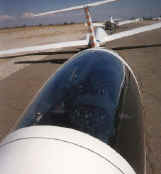 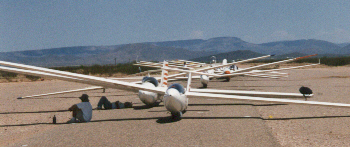
A view from the gliders and from the tow plane while waiting for the thermals to
start, or for a contest start, or just another tow plane to get back.
 
I have flown automobile launches at Estrella Sailport shown above with South
Mountain and the Estrella Mountains in the background. In both auto and winch
launches control inputs are the exact oppisite of aerotows on take off. In other
words, you push the stick forward to slow down, and pull it back to increase your speed.
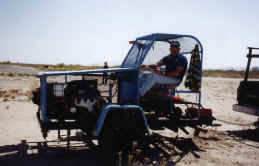 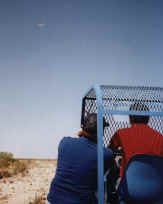
Winch Launches are the method I have used at Buckeye Airport. I have operated
the CAP V-8 engine winch shown here with other CAP members at the controls. The
5000' long cable allows a tow to a 1000' altitude.
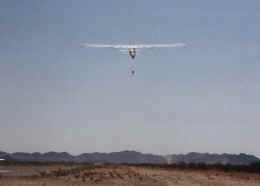
From the opposite end of the runway, the glider take off is "Silent and
Swift". It is quite a surprise to see an aircraft quietly "jump" off
the ground and speed up to 60 mph in a few seconds.
 
Aerotows are the method of launch at Pleasant Valley Airport shown here with the
Bradshaw Mountains in the background.

Commercial operations at Turf Soaring include scenic flights, flight instruction,
aerobatic flights, and aircraft rental. Introductory flights and instruction are
usually done in SGS2-33 aircraft as shown here.
 
Flying the single seat SGS1-26 is a lot of fun. The SGS2-32 is a three place
glider which is popular with families with young children, and with couples on Valentines
Day.
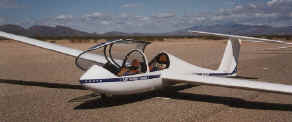 
Both the G-103 and ASK-21 are used for our aerobatic flights and cross-country
flying.
 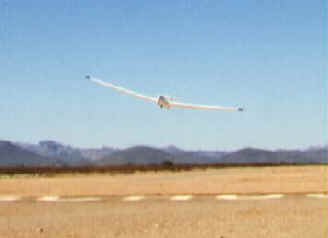
Aerobatic flights include loops and cloverleafs, wingovers and hammerhead stalls,
inverted flight and split-Ss, rolls and even spins (upright and inverted) if desired.
The ride usually concludes with a high-speed low-pass about 150 mph and 10 feet
above the ground to a perpendicular runway, climbing back to a mid-field downwind at 600
feet for a landing.
 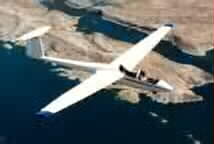
The single place Swift S-1 is capable of great aerobatics including pulling +10gs
or -7gs and is able to do outside maneuvers like an outside loop. Aircraft like the
Grob and ASK are also excellent for cross-country flying.
On one occasion an interesting incident occurred while I was giving an aerobatic
ride in the Grob-103 to a friend. Toward the end of the flight after most of the
aerobatic maneuvers had been completed, and while flying inverted, we experienced an
uncommanded spoiler extension and they stuck in the full open position (a mechanical
failure). While flying upside down I tried to correct the situation (which was later
determined to be uncorrectable in flight), and subsequently did a Split S (last half of a
loop) and prepared for an off-field landing as we could not make it back to the airfield.
An exciting but uneventful landing was accomplished in the dessert (no small feat
with all of the large cactus, mesquite bushes, revines, gullies and washes).
Off-field landings in a glider are not uncommon in a glider, especially on cross country
flights. Fortunately though they do not happen often. After retrieving the
glider back to the airfield, I them did a commercial aerobatic flight and on take-off at
about 180' above the ground we had a tow rope break. I was able to do a modified
wing-over for an immediate downwind landing. Tow rope breaks too are not uncommon,
though they usually do not occur at low altitudes (which usually require an off-field
landing below 200').
|
 | Though flying sailplanes can be fun as an individual sport in competition and as a
solace from the world's activities, I find it much more fun to share the experience with
family, friends, and others.
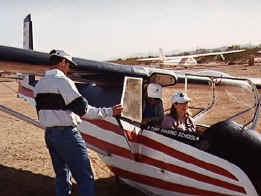 
Going for a flight with Lisa
in the SGS2-33 and with Larry in the SGS2-32.
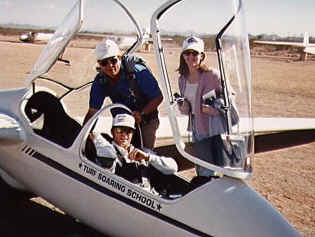
Taking Dan for an aerobatic flight in the ASK-21.
The Soaring Society of America is the association that all glider pilots should belong
to. Located in Hobbs, NM, I had the pleasure of flying there with a National Glider
Encampment for young Civil Air Patrol cadets.
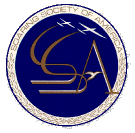
Visit the SSA

|
 | Additional airplane, towplane, and glider flying is continued with the Civil Air Patrol.
|
Follow the Thread
CAP Flying

|